Transitioning plantations to native species, especially on fragile land types, provides a major opportunity to protect and enhance native ecosystems and biodiversity. There are some sites, such as steepland, duneland and riparian corridors, where transitioning to permanent native forest will bring most biodiversity benefits. Retaining an overstorey of mature trees may be the best way to create conditions for native species to re-establish. Future management of planted or regenerating native forests for timber could help cover the costs of supporting biodiversity.
The ongoing loss of indigenous biodiversity is an enormous problem facing the world. New Zealand has the highest proportion of species at risk of extinction of any country. The protection of New Zealand’s indigenous biodiversity needs to be strategically interwoven with primary production land uses. Plantation forestry has a key role in turning the biodiversity crisis around and can help enhance our natural capital.
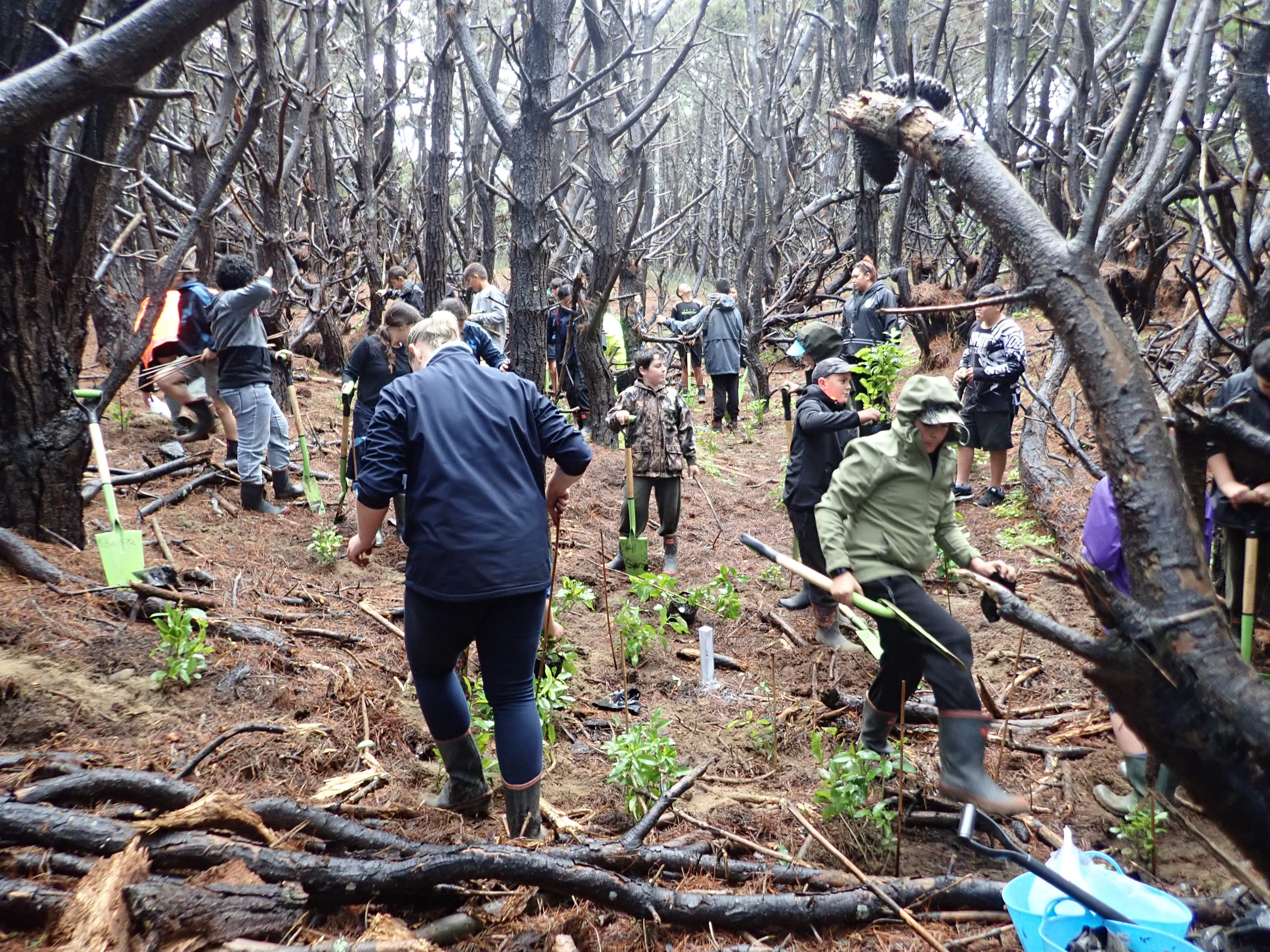
Kaitaia Intermediate School. Credit Meg Graeme
Our forestry inheritance: plantations on fragile land
Many of New Zealand’s exotic plantation forests are on steep and geologically complex terrain, often in areas where storms occur regularly. Pine forests provide root reinforcement of soils, canopy interception of rainfall and transpiration and wind protection, replacing some of the values of previous native forest cover. However, problems arise when steepland plantation forests are harvested, and large areas are exposed to erosion for roughly a fifth of the forest rotation before the new crop establishes.
Coastal dunelands are another geologically unstable land type that was extensively planted with forestry. Dunelands were progressively cleared of their natural forest vegetation after people arrived in New Zealand, destabilising these sand environments. The dunes then began eroding and actively advancing inland over farmland until they were successfully re-stabilised with pine forests planted from the 1960s. Indigenous coastal forest vegetation on dunelands is now a rare vegetation type.
Transitioning will protect our most threatened species and ecosystems
In many situations clear-fell plantation forests provide an important economic return and valuable ecosystem services. However, clear-fell management is not an appropriate land use for highly erodible land or riparian margins. This land needs permanent forest cover. Many forest owners and others in the industry are recognising this need.
There are many opportunities for transition of areas of plantation forest to native forest that will contribute significantly to the re-establishment of rare ecosystems. With good planning that is adjusted to the landscape context, plantation forestry management can weave together the restoration of wildlife habitat and linkages; protection of soils, freshwater and marine environments; carbon storage and regional economic development.
A key ecological driver for transitioning areas of pine forest to permanent indigenous forest is the protection and enhancement of threatened species and vulnerable ecosystems. Aside from predator control, threatened species will benefit from increased habitat area and connectivity within the wider landscape. Vulnerable ecosystems (including naturally uncommon ecosystems and threatened environments) often provide habitat for a disproportionate number of threatened species. Examples of threatened environments where natural vegetation cover has been severely reduced include dunelands and floodplains.
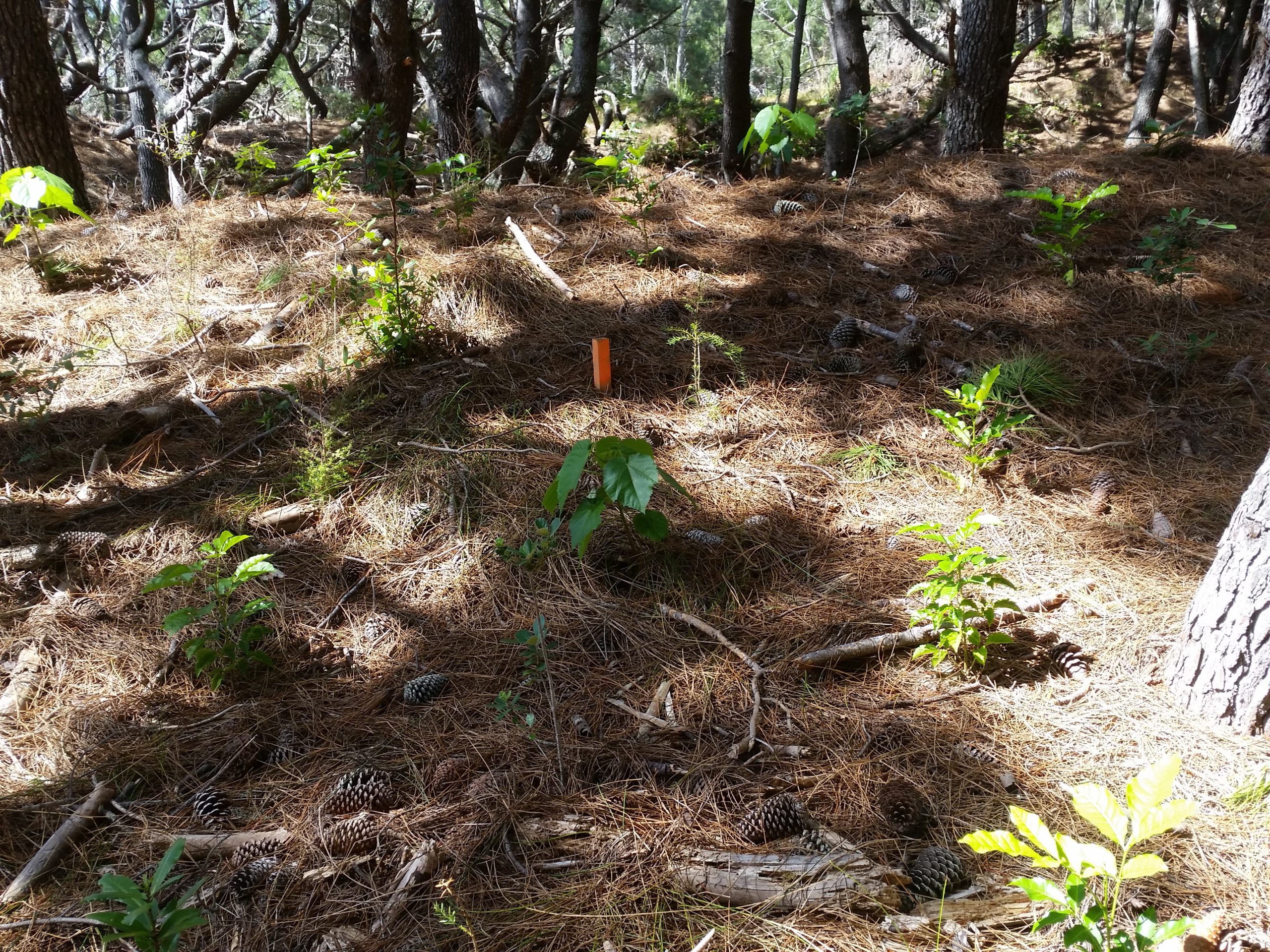
Planting under pine canopy. Credit Meg Graeme
Habitat degradation and loss is the most pervasive threat to freshwater species in New Zealand, many of which are threatened. Sediment has become a prevalent contaminant severely affecting the biodiversity and functioning of freshwater and marine ecosystems. Reducing the risk of acute sedimentation which occurs when there is a storm in the 5–7-year vulnerable period following harvest will greatly benefit aquatic biodiversity.
Careful management of riparian margins is also important to sustain indigenous biodiversity values of waterways. Here the establishment of permanent forest cover is key. Where a riparian protection zone needs to be established or widened in a plantation, any mature pines within the protection zone could be left unharvested. Harvested riparian margins lose their protective value to waterways and are susceptible to weed invasion. Unharvested mature pines and their associated native understory however can provide valuable biodiversity benefits including weed suppression and bird and bat nesting and roosting habitat. The mature vegetation also shades the waterway and provides fine organic matter and woody debris important inputs for healthy aquatic communities.
”A continuous cover forest (CCF) production system still extracts timber from the forest but is carefully managed to largely maintain canopy cover and provide other ecosystem services, mimicking the values inherent in natural forests.
Recent improvements and the way forward
Plantation forest management is continually evolving and improving with regard to habitat protection. Better roading and staggering of tree stand age, and the use of new mapping techniques that more accurately identify land most susceptible to landslides, are all now part of most forest managers’ toolkits.
The uptake of Forest Stewardship Council (FSC) standards by the larger forestry companies has also made a significant difference. FSC standards require forestry managers to protect At Risk and Threatened species, restore natural ecosystems where they are not well represented, and avoid and rectify adverse effects from forestry management. Forestry estates managed under FSC principles must protect 10% of the forest estate as a Conservation Areas Network.
Permanent forests not only benefit freshwater ecosystems and indigenous biodiversity but also provide a significant long-term carbon sink. Establishing more areas of permanent indigenous forest is one of the goals put forward in the February 2021 Climate Change Commission report. The report also identifies the need to undertake browser control to protect the existing and growing carbon stocks in New Zealand forests. A transitioning pine forest carbon budget starts off with a high initial carbon uptake by the pines which gradually reduces and is overtaken by the more diverse maturing native forest .
Transitioning plantation forests to native forests
Forest owners are increasingly interested in transitioning areas of pine plantation to native forest.
Owners could have either of the following two long-term objectives:
- transition to permanent native forest (no timber harvested)
- transition to continuous cover production forest (selective harvesting of individual trees/small coupes of trees for timber).
A continuous cover forest (CCF) production system still extracts timber from the forest but is carefully managed to largely maintain canopy cover and provide other ecosystem services, mimicking the values inherent in natural forests.
Options for transitioning
The options to transition pine forest to native forest are:
- fell the plantation and then establish a native forest cover, or
- leave plantation trees unharvested to assist native forest establishment.
a) Fell and establish native forest
Native forest succession generally follows a pathway where one plant community stage improves conditions over time for the following plant community stage. Grasses and low scrub turn into taller shrubland and then forest. Colonising plants (e.g. bracken, mānuka, kānuka and karamū) are adapted to thrive in exposed situations and often depleted soils. These plants generally produce a lot of seed, have short life cycles and are intolerant of heavy shade. The colonising plants enrich the soil nutrients and provide shelter to allow a greater diversity of shrubs and trees to establish including broadleaf species such as māhoe and rewarewa. Then, as the plant height increases and conditions become increasingly shaded and protected, the slower-growing species establish including canopy tree species (e.g. tawa, pūriri, rimu) that will eventually form a mature forest and provide greater diversity.
Natural succession pathways are influenced by disturbances, site conditions and history. Fire has always been a natural disturbance to New Zealand forests, and re-sets the successive trajectory. With the arrival of people, fire disturbance increased and, with climate change, the risk of fire is likely to increase again. The other significant disturbance pressure for New Zealand forests is browsing by introduced mammals (e.g. rabbits, possums, goats, deer or stock) and predation of seeds by rats, possums and pigs. These exotic animals can exert significant pressure on species survival in a regenerating forest. A heavily browsed forest also has a depleted understory and a more open canopy, exposing the whole forest to increased drying winds, light and greater opportunities for weeds to invade.
The trajectory of native forest development can be significantly altered by weed dominance. Pioneer weeds, like native colonising plants, generally produce lots of seed, require high light levels and can establish in poor soils. Their fast growth means they can often dominate a newly disturbed area and suppress native vegetation growth. Some weeds like gorse dominate just for the pioneer successional phase and then (as long as seed sources are nearby) native species supersede it within 50-60 years. This is strikingly apparent on many of the hill slopes around Wellington and Nelson and at Hinewai Reserve on Banks Peninsula. Some gorse sites could benefit from supplementary planting to ensure seed sources for native plant diversity. Other weed species, however, will require control if they will permanently suppress forest regeneration.
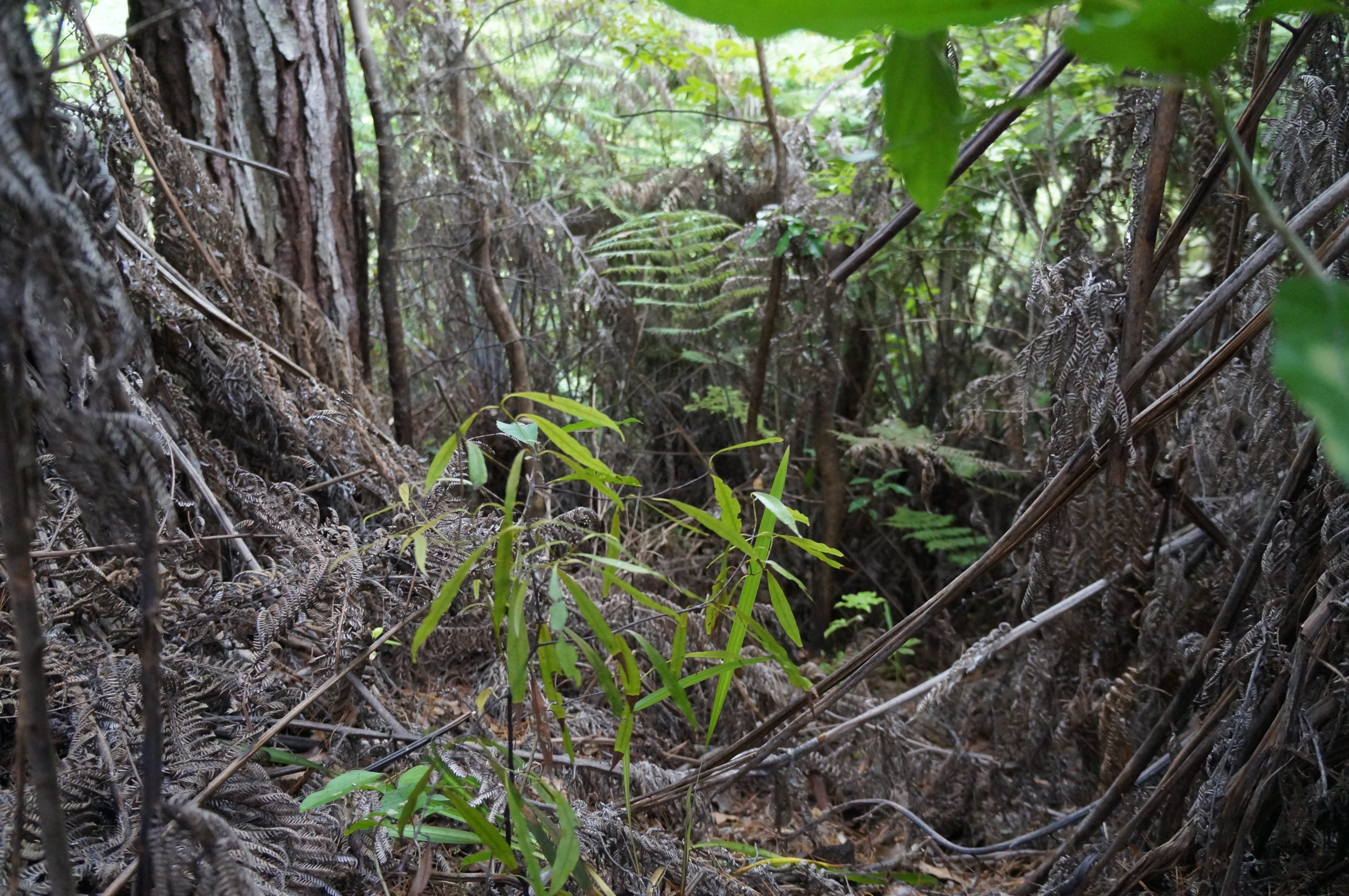
Tawa regenerating. Credit Meg Graeme
b) Native forest restoration through unharvested plantation
The success of native vegetation restoration through exotic conifers is dependent on the dominant conifer species. Pinus radiata in most environments (except very dry environments) will generally be replaced by native vegetation if left unharvested, while other Pinus species (e.g. Pinus contorta) and Douglas fir can inhibit tree seedling establishment. A variety of other factors will then determine how long it might take to make the transformation.
A mature Pinus radiata plantation forest provides a sheltered and shady environment. Where native seed sources are nearby, shade-requiring native canopy trees can potentially establish here decades before they would in a post-clearfell scenario. The fast-growing pines initially cut out the light for shade-intolerant weed species beneath suppressing their growth. Within two decades the pines develop a tall canopy that begins to let in some light, providing the right conditions for native vegetation to establish. As Pinus radiata seedlings require high light levels to germinate they are also suppressed by the initial pine crop and the regenerating native forest. Pinus radiata can live for up to 150 years but as long as the native forest succession is uninterrupted by fire, lack of seed source or browsers, the native vegetation will begin to dominate.
Native species in pine plantations
The relatively stable environment of a mature pine plantation provides good habitat for a variety of native species, especially in combination with native forest gullies, wetlands, streams etc. that are often adjacent or within the plantation land. The density and diversity of indigenous plant species growing within New Zealand pine plantation stands depends on site type, plantation stocking density, stand age and the distance to native seed sources. As a plantation canopy grows, so too does the diversity of understorey indigenous plant species. However, clear-felling forests every 30 years or so does not allow specialist communities to develop.
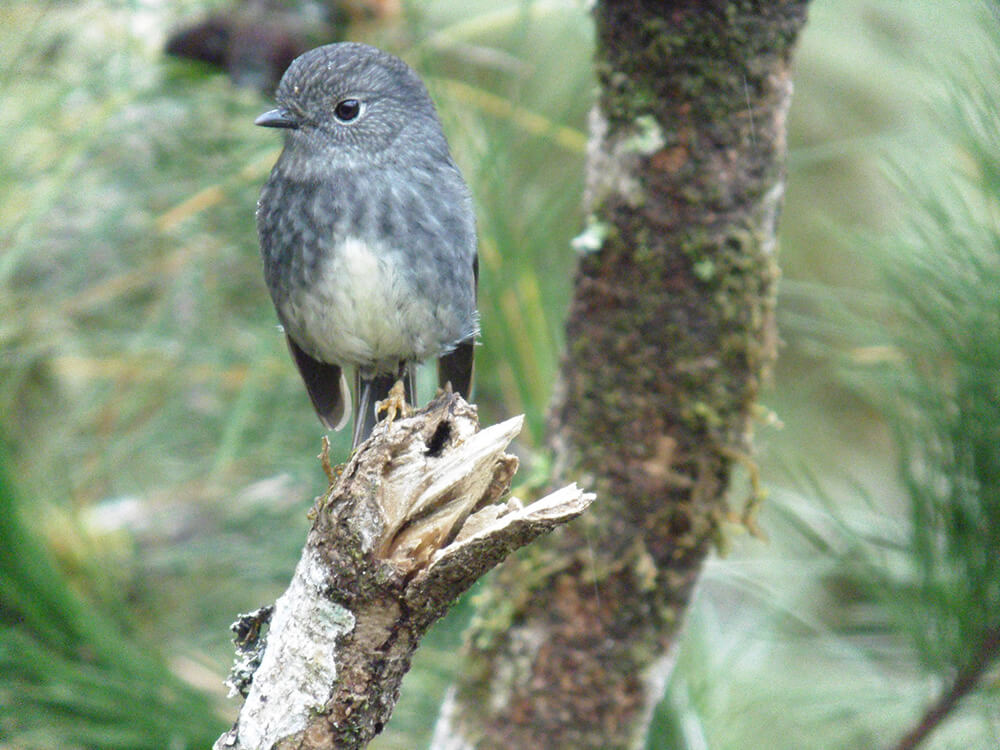
Forest. Credit Robin Black
Studies have recorded at least 80 threatened plants and animals in plantation forest stands in New Zealand. Dividing these species into groups there are 27 plants, 8 invertebrates, 13 birds, 30 reptiles and 2 bats. Most threatened plant species within plantation forests are those that can grow and set seed within the harvest rotation. Young plantation forest stands are structurally simple and homogeneous and mainly support generalist invertebrate populations which in turn support insectivorous birds (fantails, grey warblers, shining cuckoos). As stands age and structural complexity develops , the forest can become suitable for other species like kiwi, long-tailed bats, rifleman, and morepork to colonise. If not harvested, climax plantation trees can eventually begin to dominate further increasing diversity of food (insects, fruit and seeds) as well as nesting and roosting opportunities for species like bellbird, kākā, tūī, kererū, kōkako and short-tailed bat.
Utilising the existing sheltered, cool and shady microclimate of a mature pine forest will mean that the native forest succession can often be advanced by a number of decades and a selection of native shrubs and tree seedlings will already be established. Also, importantly for aquatic ecosystems downstream of steep land forest, if the plantation is left unharvested the land will not be exposed to another clearfell harvest cycle and associated erosion risk.
Research is still needed to clarify the most efficient and cost-effective methods for enhancing forest transition and which sites will be successful, particularly with harsh environments like duneland. Tāne’s Tree Trust is currently undertaking a Coastal Buffers Sustainable Farming Fund project. Many of the sacrificial exotic buffers planted in the 1970s that protect today’s duneland plantation forests from the salt wind are beginning to fail. The Tāne’s Tree Trust project is investigating whether these old buffer pines can be utilised to boost the establishment of a replacement indigenous coastal buffer. Initial results are promising. If the exotic buffer conditions allow indigenous canopy species to establish this will mean that highly threatened coastal duneland forest may be able to be restored several decades ahead of similar restoration efforts that start from scratch establishing early successional growth first.
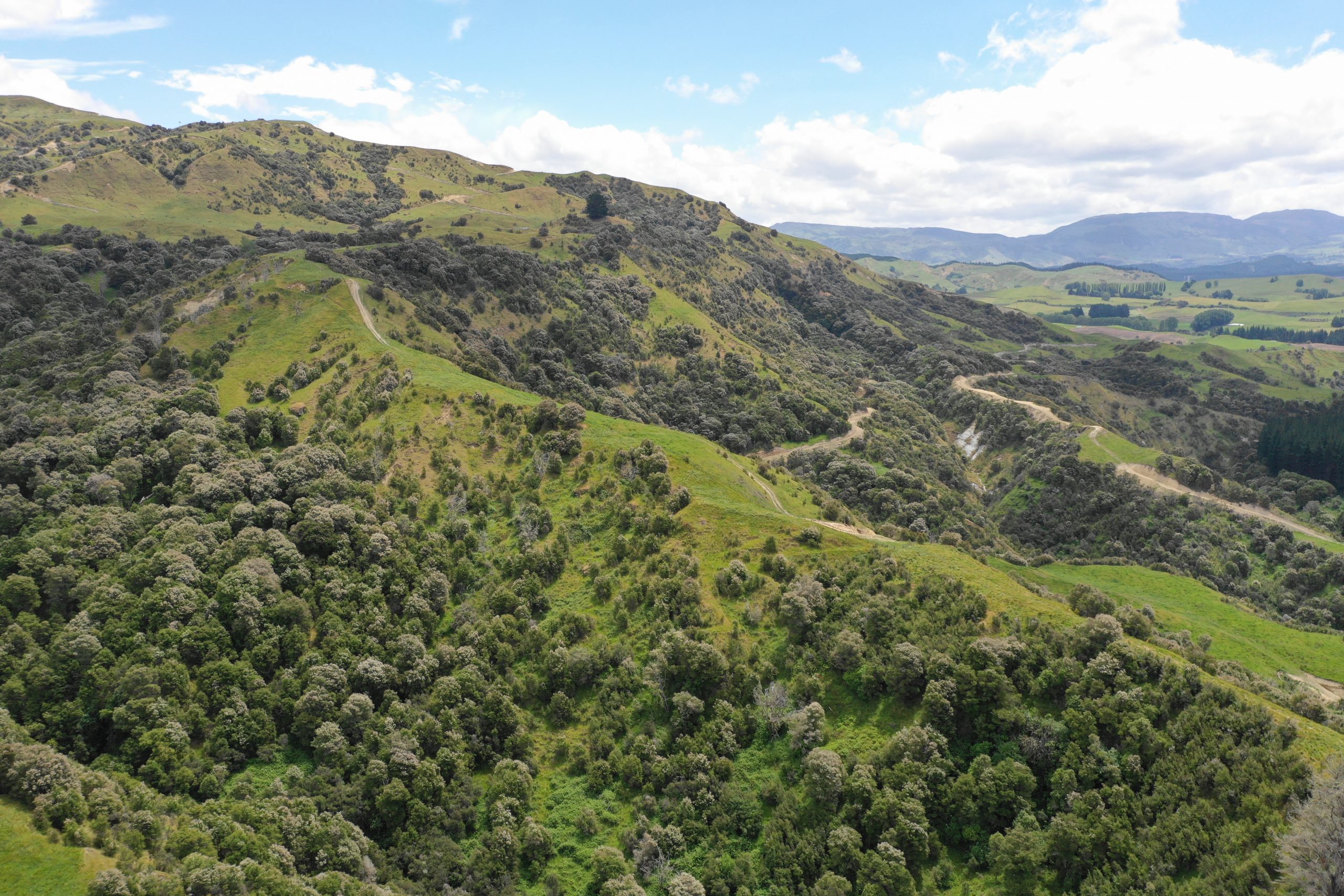
Credit Michael Bergin
The transition to permanent native forest cover and the potential adoption of continuous cover forestry particularly on highly erodible slopes could have significant positive cost/benefit returns in ecosystem services such as flood reduction, long-term carbon sequestration, reduced sedimentation, and increased biodiversity. A key tool to realise the desired outcome of expanding native forests is to financially recognise the ecosystem services of these forests (for example through biodiversity credits). It is also vital that good environmental practices such as retirement of steepland plantation areas and riparian zones are rewarded and not deterred by financial disincentives (e.g. carbon liabilities).
Central government could also assist with development of harvesting technology for steepland sites, development of suitable timber crops and end product markets. This would allow for efficient single tree/small coupe harvesting and high value timber crops which would improve the economics of continuous cover forestry.
New Zealand has some magnificent native timbers that could be developed into a sustainable indigenous timber market. Sustainable native timber needs to be sourced from planted or assisted-regeneration trees grown on previously farmed or exotic-forest land, and not from existing natural forests. It would also require the development of a robust product tracking and tracing system to ensure consumers have confidence in the environmental credentials of the timber they buy.

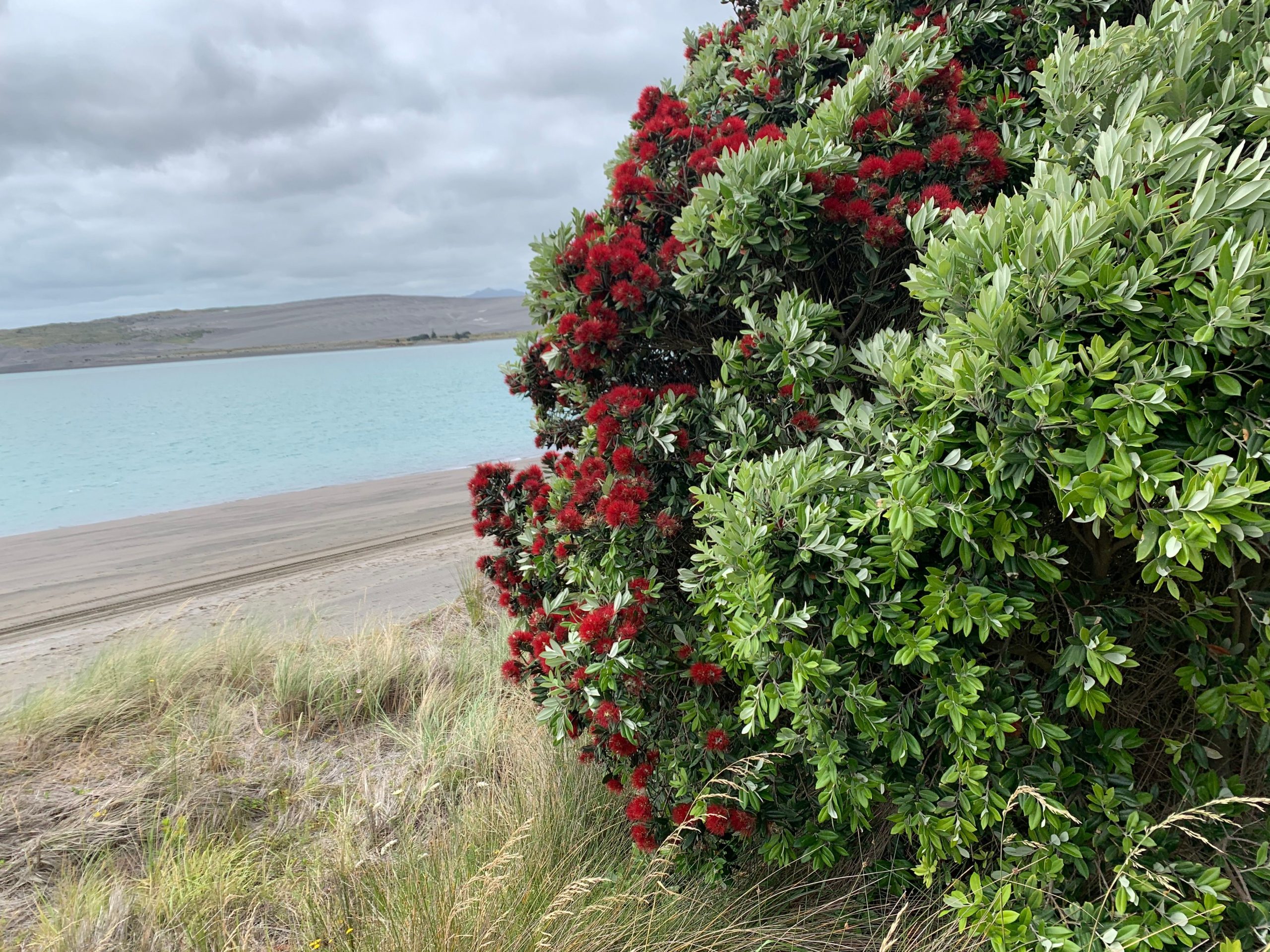


Leave a comment